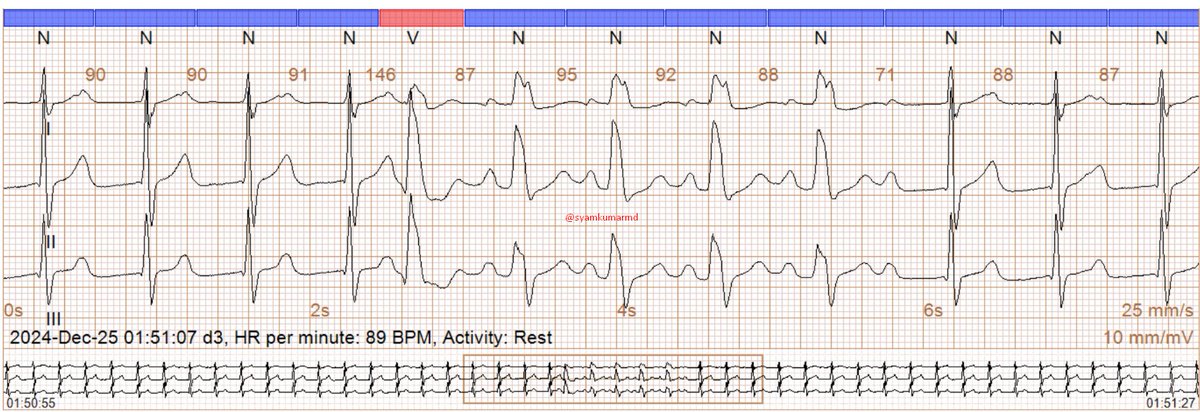
David Didlake
@didlakedw
Acute Care Nurse Practitioner. Firefighter / Paramedic (Ret). ems12lead.com
ecgladder.blogspot.com
ID: 1469807298910597122
11-12-2021 23:12:34
4,4K Tweet
3,3K Followers
249 Following

Dr Razi PMcardio—AI that reads ECGs Hari Krishna Rau Subbarao Eugene What do you think in this EKG?


30 year male with first onset dizziness-no syncope-family history of pacemaker implantation-no known risk factors-what is the rythm Syamkumar Shanta Chakrabarti Dr G Rajesh (Gopalan Nair Rajesh) David Didlake
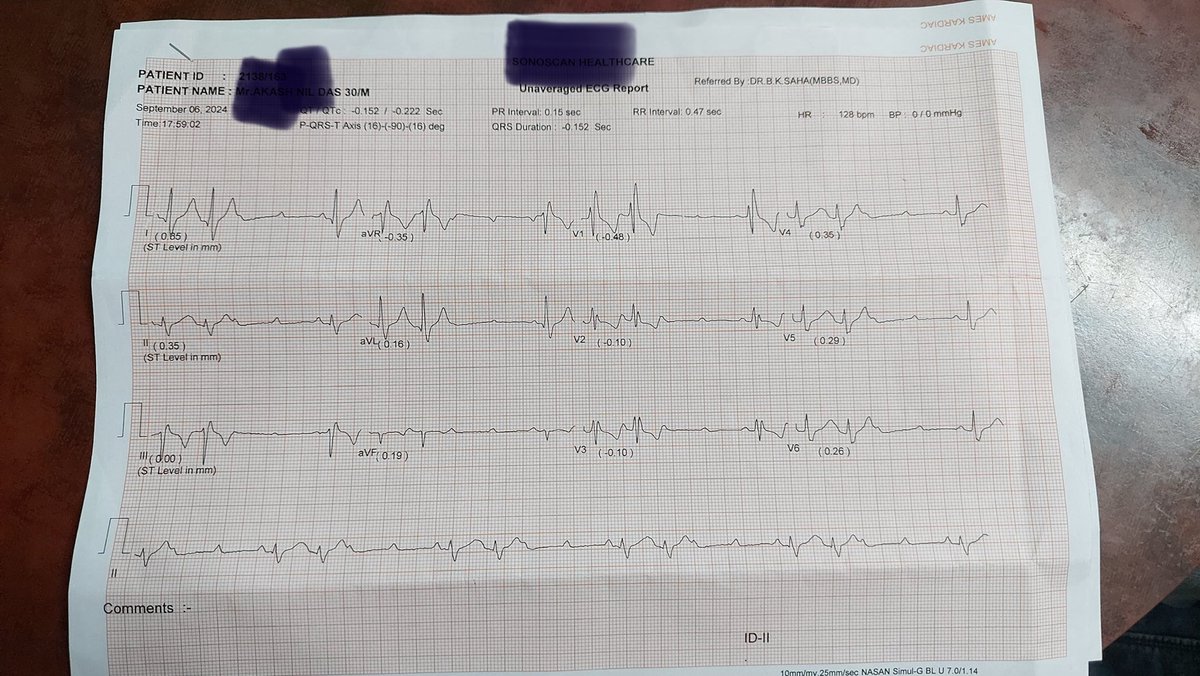

New blog post up on EMS 12-Lead from Judah Kreinbrook and myself on TCP in a patient with Complete Heart Block and Altered Mental Status. Give it a quick read: ems12lead.com/post/transcuta…



Fergie J. Losiniecki, MD, FACC, FHRS Medtronic Here transseptal conduction keeps LBBB until VE resets both bundles and since there's no delay in both bundles you have no bundle branch block. Maybe CSP is now trendy. The same can be achieved by LBBB area pacing. With some small delay but eliminating LBBB with LV dysfunction.
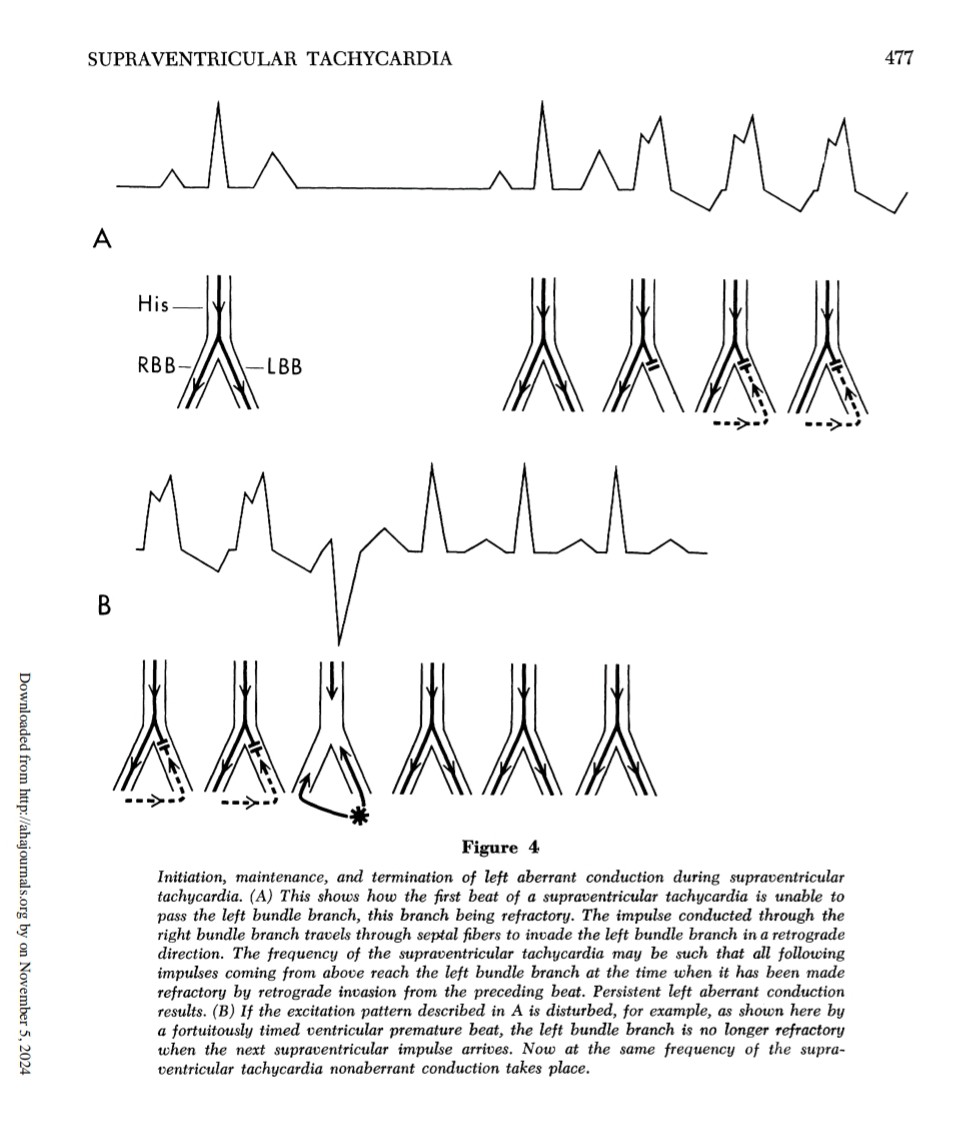

Mid 60’s M, Hx CABG, EF 45 and stable. No symptoms. ECG1 6 months ago (regular follow-up). ECG2 most recent. #ECG #CardioTwitter #MedTwitter Arron Pearce
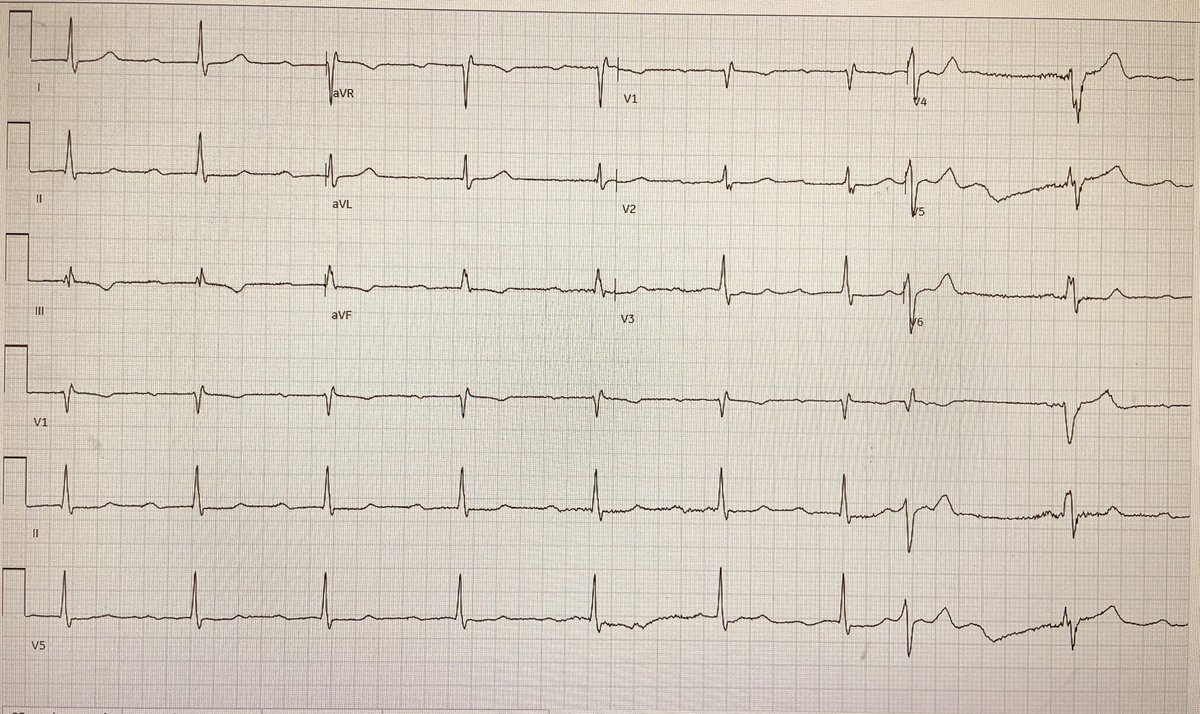




Syamkumar Another point: The HR of the sinus rhythm is the same before and after the apparent non-conducted PAC. These events happened frequently. If it were a junctional rhythm with HR similar to the sinus I would expect that at some point we would meet with a more obvious AV dissociation
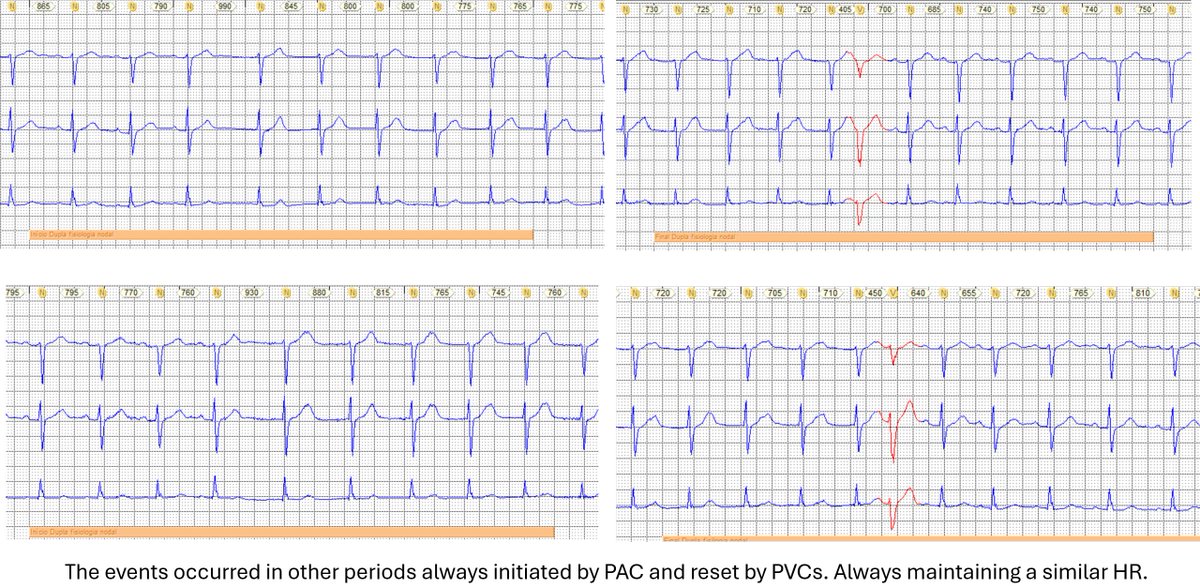

#epeeps Follow Antonio Thomaz de Andrade, MD 🇧🇷 It will be the best decision you make today. #ECG #cardiotwitter #MedTwitter




Rhythm challenge. Dx? David Didlake Dr Razi Dr. Andreas Roeschl Arnel Carmona 色々自粛中(ガラス細工の様な繊細なハートを持つ貴公子🤴)サブ垢です🙇♂️ Nanashī🫀 EfectoElectrotónico Milan Koštek #CardioTwitter #MedTwitter #EKG #EPeeps_bot #Epeeps #ECG #Cardiology #MedicalStudents #MedicalEducation #EPS #MedicalEmergency #Cardiologist


3-The answer is no. Alternation between branches occurs due to the later depolarization of the blocked branch by concealed transseptal conduction, causing the RR of the blocked branch to shorten in relation to the contralateral branch. Milan Koštek Sergio Pinski Dr. Andreas Roeschl
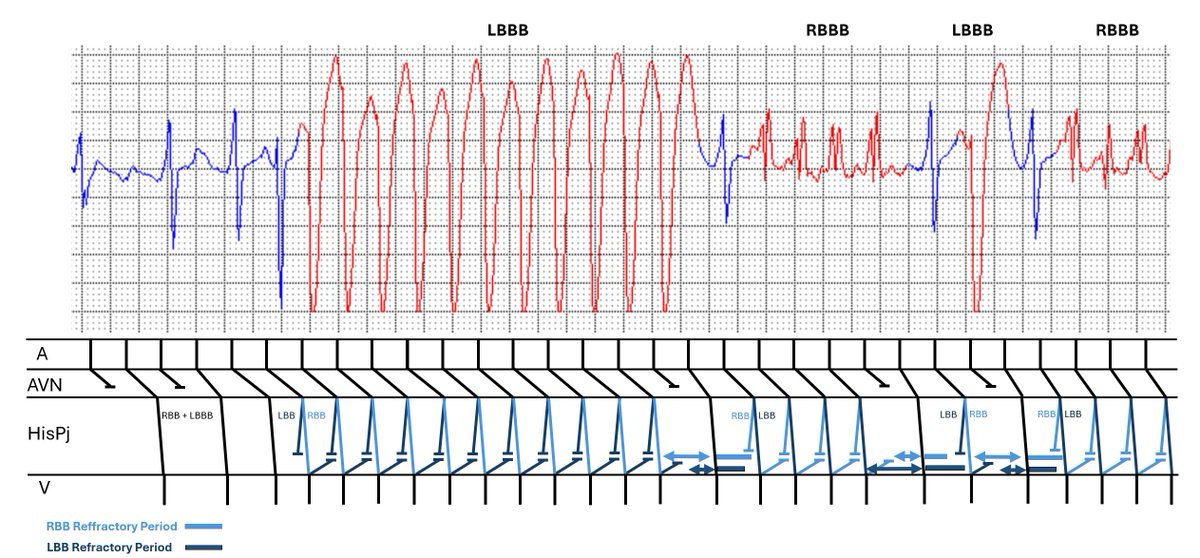

30/M with chest pain... MI or brugada pattern? Stephen W. Smith Brooks Walsh Sam Ghali, M.D. Adrian Baranchuk MD FACC FRCPC FCCS FSIAC


28 YO Female comes to the ER with palpitations Tachy Solved by Adenosine 6mg Rythm? Miguel Angel Lopez-Lizarraga Dr. tocino Arnel Carmona Adrian Baranchuk MD FACC FRCPC FCCS FSIAC Alexis Hartmann ECG.Hacks David Didlake Syamkumar 12 Derivaciones ECG Dr Ulhas Pandurangi Dr. Andreas Roeschl EP_Bot #EP #EPEEPS #ECG #EKG #Cardiology
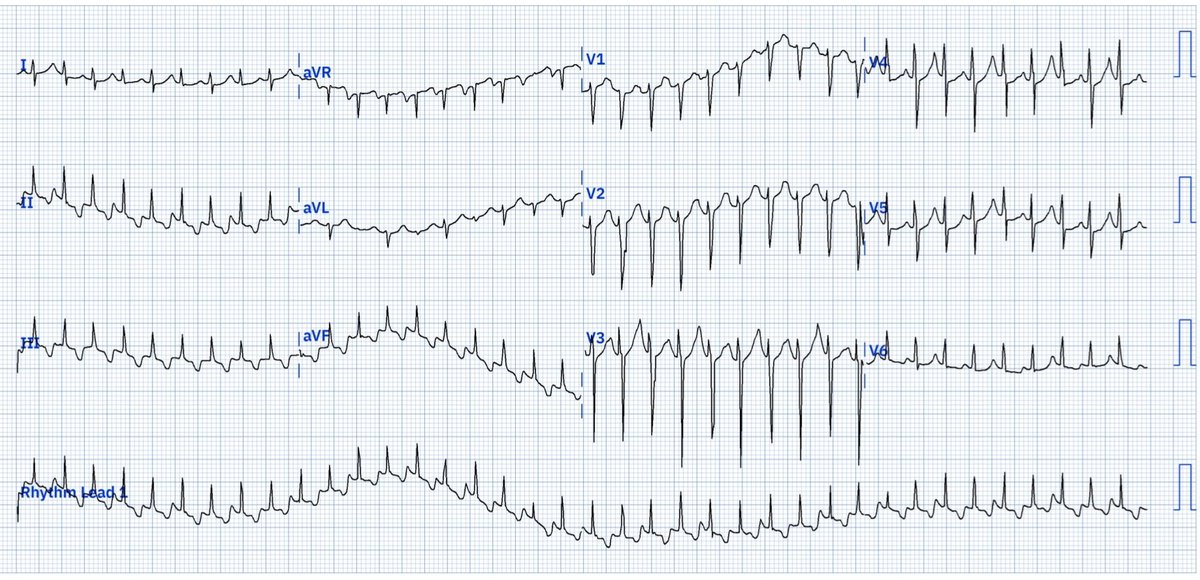

Dr. Andreas Roeschl José Luis Morales Miguel Angel Lopez-Lizarraga Dr. tocino Arnel Carmona Adrian Baranchuk MD FACC FRCPC FCCS FSIAC Alexis Hartmann ECG.Hacks David Didlake 12 Derivaciones ECG Dr Ulhas Pandurangi EP_Bot This is my dictum: if the SVT terminates with 6 mg adenosine, it is more likely AT . AT from Triggered activity are adenosine sensitive




